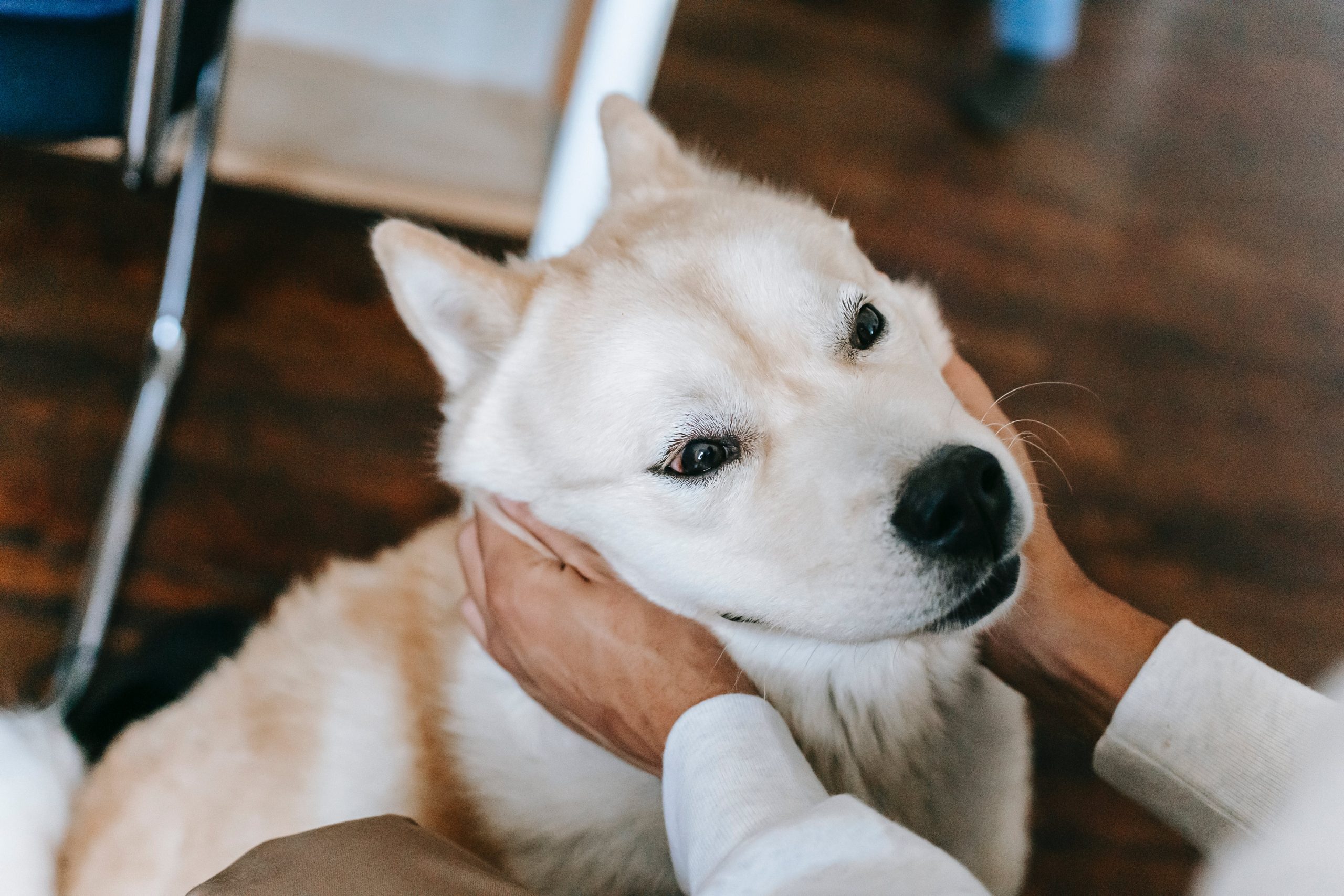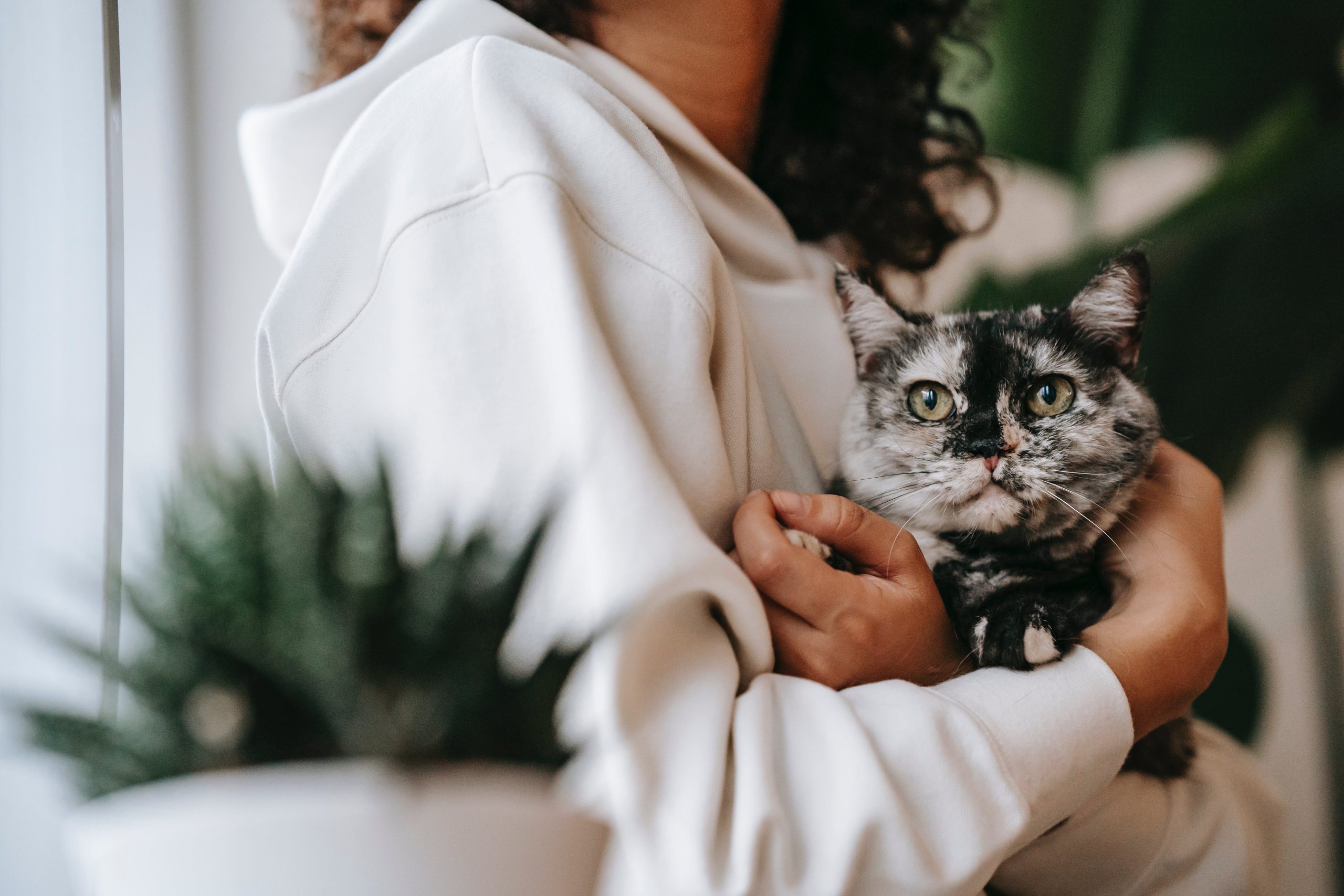A new study conducted by researchers from the University of Copenhagen and published in Frontiers in Veterinary Science has found that pet owners appear to care more about their dogs than their cats. The study surveyed pet owners aged 18 to 89 in three European countries — Denmark, the U.K., and Austria — to assess the degree to which they care about their pets. The researchers used several metrics, including the Lexington Attachment to Pets Scale (LAPS), to measure emotional bonding and care. Overall, dog owners scored higher on LAPS, were more likely to have insurance for their pets, and were more willing to spend money on life-saving treatments for their dogs. However, the degree of difference varied between countries, with Denmark showing the strongest preference for dogs and the U.K. showing the least difference between dogs and cats.
Dr Peter Sandøe, Lead researcher of the study, told the BBC: “There seems to be no natural limit to how much people will end up caring about their cats compared to their dogs.”
However, Professor Clare Palmer of Texas A&M University who co-authored the paper caveats that study only looks at three countries located in central and western Europe. “It raises intriguing questions regarding what comparative studies of other countries might find. Perhaps there are countries where the level of care for and attachment to cats is, in fact, higher than dogs?” she says.
Key Takeaways:
- People generally care more about their dogs than their cats according to a new study.
- The study surveyed pet owners in Denmark, the U.K., and Austria to assess pet care preferences.
- Dog owners scored higher on the Lexington Attachment to Pets Scale (LAPS) and were more likely to have insurance for their pets.
- The degree of difference in care and attachment varied between countries.
- Cultural factors and lifestyle may influence pet care preferences.
The Study’s Methodology and Sample Size
In this study on pet care preferences, researchers from the University of Copenhagen surveyed a diverse group of pet owners across three European countries — Denmark, the U.K., and Austria. The study included a large sample size of 17,747 pet owners, evenly divided between dog owners and cat owners.
The participants in the study ranged in age from 18 to 89, representing a wide range of demographics. By including such a diverse sample, the researchers aimed to capture a comprehensive understanding of pet care preferences across different age groups and cultural backgrounds.
The researchers utilized the Lexington Attachment to Pets Scale (LAPS) to measure emotional bonding and care among the participants. This scale has been widely used in previous studies and provides a reliable measure of the strength of the human-animal bond. Additionally, the researchers asked participants about their pet health insurance and willingness to invest in life-saving treatments for their pets.
The following table summarizes the key details of the study’s methodology and sample size:
| Study Details | Denmark | U.K. | Austria | Total |
|---|---|---|---|---|
| Number of Pet Owners | 5,749 | 5,749 | 5,249 | 17,747 |
| Age Range | 18-89 | 18-89 | 18-89 | 18-89 |
| Pet Type | Dog | Cat | Dog |
Overall, the study’s methodology and sample size provide a solid foundation for understanding the care preferences of pet owners across different countries and age groups. The detailed analysis and insights gained from this study contribute to the growing body of knowledge in the field of human-animal relationships.
Results by Country
The study examined the preferences for dogs and cats among pet owners in different countries. The results showed that there were variations in these preferences, indicating the influence of cultural factors.
In the United Kingdom, the study found that there was a slight preference for dogs over cats. While dog owners displayed a higher level of emotional attachment and care compared to cat owners, the difference was not as pronounced as in other countries.
In Austria, the preference for dogs was stronger, with dog owners scoring higher on the emotional attachment scale. They were more likely to have insurance for their dogs and reported being willing to invest more in life-saving treatments for their pets.
Denmark showed the strongest preference for dogs among the three countries surveyed. Dog owners in Denmark scored significantly higher on the emotional attachment scale compared to cat owners. This finding suggests that cultural factors play a significant role in shaping pet preferences and the level of care provided.
Cultural Factors and Pet Preferences
The study hypothesized that cultural factors may explain the variations in pet preferences observed. Cultural norms surrounding pet ownership, the amount of time spent with pets, and the degree of contact and dependence on pets are all factors that may affect the level of care and attachment.
These findings highlight the need for further research to understand the specific cultural factors that contribute to the differences in pet care and preferences. Comparative studies in different countries could provide valuable insights into how cultural factors shape pet preferences and the level of care provided to dogs and cats.
| Country | Dog Preference | Cat Preference |
|---|---|---|
| United Kingdom | Slight preference for dogs | Modest difference in attachment and care |
| Austria | Strong preference for dogs | Lower attachment and willingness to invest in cats |
| Denmark | Strongest preference for dogs | Lower attachment and care for cats |
Factors Influencing Care and Attachment
When exploring the factors that influence the level of care and attachment to pets, the researchers considered both pet behavior and cultural hypotheses. Initially, it was hypothesized that dogs’ behavior, such as their loyalty and companionship, may contribute to their owners’ stronger attachment. However, the study found that it was the cultural factors surrounding pets that played a more significant role in influencing care and attachment.
“The difference in care and attachment between dogs and cats is not solely determined by behavior, but also by the culture surrounding pet ownership,”
Furthermore, the study uncovered interesting findings related to the behavior and living arrangements of cats. Previous research has suggested that cats, especially indoor cats, develop closer relationships with their owners, leading to higher levels of care and attachment. This was observed in countries like Mexico and the U.S., where a large proportion of cats are kept indoors. On the other hand, in countries like the U.K. and Denmark, where cats have outdoor access, the level of care and attachment was found to be lower. This suggests that the behavior and living arrangements of cats may also play a role in the preference and level of care they receive from their owners.
The findings of the study provide valuable insights into the complex dynamics of pet care and attachment. They highlight the importance of considering cultural factors and the behavior of pets when understanding the differences in care between dogs and cats. By gaining a deeper understanding of these factors, pet owners, animal welfare organizations, and policymakers can work together to promote the well-being and care of all pets, regardless of their species.

| Indoor Cats | Outdoor Cats | |
|---|---|---|
| Level of Care and Attachment | Higher | Lower |
| Behavior | Closer relationship with owners | More independent |
| Cultural Factors | Higher emphasis on indoor cats | More outdoor access |
Limitations and Need for Further Research
The study has certain limitations that should be considered when interpreting the results. Firstly, the study only focused on pet owners in three European countries: Denmark, the U.K., and Austria. Therefore, the findings may not be representative of pet owners in other regions or cultures. To gain a more comprehensive understanding of pet care preferences, future research should include a broader sample from various countries and cultural backgrounds.
Furthermore, the study relied on self-reported data from pet owners, which may be subject to bias. Participants may overestimate or underestimate their level of care and attachment to their pets. The use of objective measures, such as behavioral observations or physiological indicators, could provide a more accurate assessment of pet care preferences.
Additionally, the study primarily focused on emotional attachment and financial investment as indicators of care. There are other factors that contribute to pet care, such as time spent with pets, provision of basic needs, and overall well-being. Future research should consider a more comprehensive approach to understand the multifaceted nature of pet care.
| Limitations of the Study | Need for Additional Research |
|---|---|
| The study only included pet owners from three European countries | Further research with a broader sample from different regions and cultures |
| Reliance on self-reported data | Objective measures and observations for more accurate assessment |
| Focus on emotional attachment and financial investment | Consideration of additional factors influencing pet care |
Emotional Attachment and Care for Dogs
The study revealed that pet owners displayed a higher emotional attachment to their dogs compared to their cats. Dog owners were found to be more likely to have insurance for their dogs and reported being willing to spend more money on life-saving treatments for their canine companions. This suggests that pet owners invest more emotionally and financially in their dogs than their cats.
Table: Emotional Attachment and Care for Dogs
| Emotional Attachment | Financial Investment | Health Insurance |
|---|---|---|
| Higher emotional attachment for dogs | Greater financial investment in dogs | Dog health insurance more common |
| Lower emotional attachment for cats | Less financial investment in cats | Cat health insurance less common |

The stronger emotional attachment and increased financial investment in dogs may be attributed to the close bond between humans and dogs. Dogs often demand more attention and affection, leading to stronger emotional connections. Additionally, dogs have historically played significant roles as working companions and loyal protectors, further strengthening their bond with humans.
This emotional attachment to dogs is evident in the higher willingness of dog owners to invest in their pets’ health and well-being. Having insurance for dogs and being ready to spend more money on life-saving treatments reflects the commitment and care that dog owners have for their loyal companions.
Emotional Attachment and Care for Cats
While pet owners displayed a lower emotional attachment to their cats compared to their dogs, the study found that the level of care and investment in cats varied by country. In the U.K., there was a modest difference in emotional attachment and willingness to invest in cats. In Austria and Denmark, the difference between dogs and cats was more pronounced, with cat owners displaying lower attachment and less willingness to invest in their cats. This suggests that cultural factors and the level of contact and dependence may play a role in the care and attachment to cats.
In countries where cats have outdoor access, such as the U.K. and Denmark, the level of care and attachment was found to be lower compared to countries where cats are kept indoors, such as Mexico and the U.S. Previous studies have shown that indoor cats have a closer bond with their owners, leading to higher levels of care and attachment. The behavior and living arrangements of cats, therefore, may also influence the preference and level of care for cats.
| Emotional Attachment | Financial Investment | Cat Health Insurance | |
|---|---|---|---|
| United Kingdom | Lower | Modest | Not common |
| Austria | Lower | Pronounced | Less common |
| Denmark | Lower | Pronounced | Less common |
| Mexico | Higher (Indoor cats) | Higher (Indoor cats) | More common (Indoor cats) |
| United States | Higher (Indoor cats) | Higher (Indoor cats) | More common (Indoor cats) |
These findings indicate that while cat owners may have a lower emotional attachment to their cats overall, there are cultural and environmental factors that influence the level of care and attachment. Further research is needed to understand the specific cultural factors that contribute to these variations in care preferences for cats.
Possible Reasons for Dog Preference
In the study, the researchers sought to understand why pet owners show a stronger preference for dogs over cats. While initial hypotheses focused on the behavior of pets, the findings suggest that it is likely the cultural factors surrounding dogs that influence this preference.
Dogs are known for their close interaction with humans and their role as companions in various activities. This dog-human interaction may create a stronger emotional bond, leading to a higher level of care and attachment from their owners. Dogs often demand more attention and affection, which can deepen the connection between humans and dogs.
Additionally, dogs have historically played important roles in society, such as working companions and service animals. Their utility and contribution to human life may further strengthen the preference for dogs. This cultural significance and the perception of dogs as valuable and loyal companions may contribute to the higher level of care and attachment observed in the study.
| Reasons for Dog Preference | Explanation |
|---|---|
| Dog-human interaction | The close bond and interaction between dogs and humans may create a stronger emotional connection, leading to a higher level of care and attachment. |
| Cultural significance | Dogs have historically played important roles in society, such as working companions and service animals, which may contribute to their perceived value and preference. |
In conclusion, the study suggests that the stronger preference for dogs over cats is influenced by cultural factors and the unique dog-human interaction. Further research is needed to explore these factors in more detail and to understand how they shape pet care preferences.
Reasons for Cat Preference
While the study found that overall, pet owners displayed a higher emotional attachment to their dogs compared to their cats, there are several possible reasons for the lower level of care and attachment to cats in certain countries. One key factor that may influence cat preference is their behavior. Cats tend to be more independent and aloof compared to dogs, which may result in a perceived lower level of emotional attachment from cat owners.
However, it is important to note that the level of care and attachment to cats varied by country. Previous studies have suggested that cats, especially indoor cats, may become closer to their owners, leading to higher levels of care and attachment. In countries where a higher proportion of cats are kept indoors, such as Mexico and the U.S., there tend to be higher levels of care for cats.
Conversely, in countries like the U.K. and Denmark, where cats have outdoor access, the level of care and attachment was found to be lower. This could be due to less contact and dependence on outdoor cats, as well as cultural factors surrounding cat ownership. The study highlights the importance of considering both cat behavior and cultural factors when examining the preference and care for cats.
Overall, the reasons for cat preference are multifaceted and can vary depending on individual preferences, cultural norms, and lifestyle factors. Further research is needed to better understand the specific reasons behind cat preference and to explore how these factors interact with each other.

Future Trends and Evolving Care
As our lifestyles continue to evolve, so does the way we care for our pets. Changing pet care trends reflect the shifts in our society and the growing importance that pets hold in our lives. With an increasing number of people considering their pets as part of the family, the way we care for them is also changing.
One of the notable trends in evolving pet care is the emphasis on personalized and specialized care. Pet owners are becoming more aware of the unique needs of their pets and are seeking tailored solutions to meet those needs. This includes customized diets, specialized training programs, and even personalized healthcare plans.
Another trend is the integration of technology into pet care. From wearable devices that track our pet’s activity and health to smart feeders that can be controlled remotely, technology is revolutionizing the way we care for our pets. These advancements not only make it easier for pet owners to monitor and manage their pet’s health, but they also provide valuable insights into their behavior and wellbeing.
| Trend | Description |
|---|---|
| Personalized and specialized care | Pet owners are seeking tailored solutions to meet the unique needs of their pets, including customized diets, specialized training programs, and personalized healthcare plans. |
| Integration of technology | Advancements in wearable devices, smart feeders, and other technology are revolutionizing the way we care for our pets, providing insights into their health and behavior. |
| Focus on mental and emotional wellbeing | Increasingly, pet owners are recognizing the importance of supporting their pets’ mental and emotional health, leading to the rise of enrichment activities, stress-relief products, and behavioral therapy. |
Lastly, there is a growing focus on the mental and emotional wellbeing of pets. Pet owners are recognizing that their animals have complex emotional lives and are taking steps to support their mental health. This includes providing enrichment activities, stress-relief products, and even seeking behavioral therapy when needed.
Overall, the future of pet care looks promising, with an increased understanding of our pets’ needs and the integration of technology to enhance their wellbeing. As we continue to evolve as a society, our relationship with our pets will undoubtedly continue to evolve as well, leading to even better care and support for our animal companions.
Wrapping Up
The study’s implications are significant for the veterinary industry and pet care services. It highlights the need to reconsider and potentially expand the services offered to cat owners, acknowledging that the level of care and investment in pets can vary widely based on geographic and cultural factors. This research paves the way for more tailored and inclusive approaches to pet care, recognizing the diverse needs and attitudes of pet owners across different regions.
The results revealed a consistent pattern: dog owners, regardless of location, showed higher attachment levels as measured by LAPS. However, the extent of this disparity varied significantly across countries. For instance, Danish dog owners demonstrated a notably stronger bond with their dogs compared to Austrian and British counterparts. Similarly, pet health insurance was more common for dogs than cats in all three countries, but this preference for dogs was less pronounced in the UK. When it came to spending on life-saving treatments, dog owners were generally more willing to incur higher expenses, with this trend again most evident in Denmark.
Regarding veterinary care expectations, Danish and Austrian dog owners anticipated a broader range of services than cat owners. Interestingly, this difference was not observed in the UK, where expectations were similar across both pet types. These findings suggest that while dogs generally receive more attention and resources from their owners, this is not a universal rule. The variations among the three countries, especially the minimal differences in the UK, challenge the notion of a global trend favoring dogs over cats.
FAQ
What did the study find about pet owners’ preferences between dogs and cats?
The study found that pet owners generally care more about their dogs than their cats.
Did the study find any differences in preferences between countries?
Yes, the study found that the degree of difference in care and attachment varied between countries, with Denmark showing the strongest preference for dogs and the U.K. showing the least difference between dogs and cats.
What factors influence the level of care and attachment to pets?
The study suggested that cultural factors, such as the amount of time spent with pets and the degree of contact and dependence, may shape the level of care and attachment.
Are cats closer to their owners when they are kept indoors?
Previous studies have suggested that indoor cats may become closer to their owners, leading to higher levels of care and attachment.
What were the limitations of the study?
The study focused only on pet owners in three European countries, so further research is needed to understand if the findings hold true globally. Additionally, the study did not explore other factors that could influence pet care preferences, such as sociodemographic factors.
Why do dog owners display a higher emotional attachment and willingness to invest in their pets?
The researchers suggested that dogs’ behavior, their close interaction with humans, and their role as working companions may contribute to the stronger emotional attachment and care from their owners.
Why do cat owners display a lower level of care and attachment in certain countries?
The level of care and attachment to cats may be influenced by cultural factors, such as the behavior and living arrangements of cats. Countries with a higher proportion of indoor cats have shown higher levels of care for cats.
How do cultural factors influence pet care preferences?
Cultural factors, such as the amount of time spent with pets and the cultural norms surrounding pet ownership, may shape the level of care and attachment to pets.
What are some possible reasons for the stronger preference for dogs over cats?
The study found that the cultural factors surrounding dogs, such as their behavior and close relationship with humans, may influence the preference for dogs.
What are some possible reasons for the lower level of care and attachment to cats?
The behavior and living arrangements of cats, such as outdoor access, may contribute to the lower level of care and attachment in certain countries.
How might changing human lifestyles impact pet care preferences?
As human lifestyles continue to evolve, the level of care and attachment to pets may also change. Further research is needed to understand this relationship.
What does the study’s conclusion emphasize?
The study highlights that the care and attachment to dogs and cats are not solely determined by the nature of the animals but are also influenced by various cultural and lifestyle factors.
Article References
- https://www.frontiersin.org/articles/10.3389/fvets.2023.1237547/full
- https://www.sciencealert.com/study-finds-people-care-more-about-dogs-and-not-everybodys-thrilled
- https://www.cbsnews.com/news/dog-owners-care-more-about-their-pets-than-cat-owners-study-says/
- https://www.psypost.org/2023/11/dogs-vs-cats-new-study-reveals-which-pets-receive-more-care-and-attention-214462






